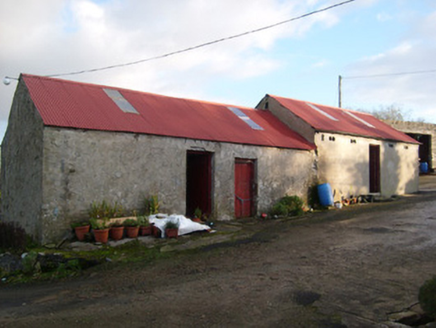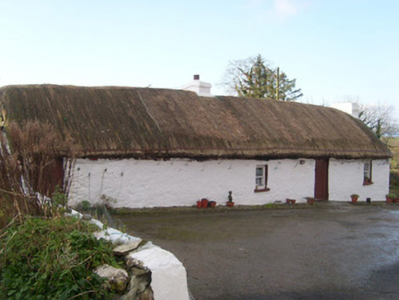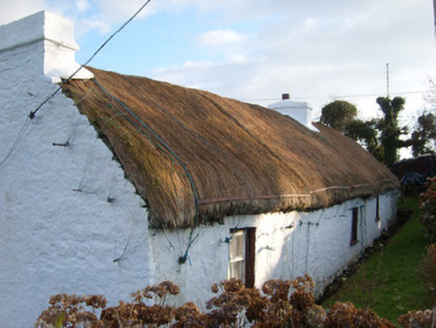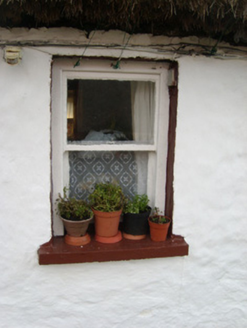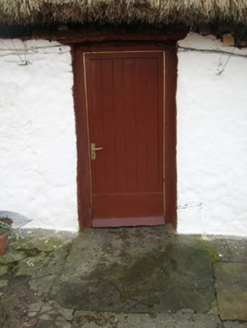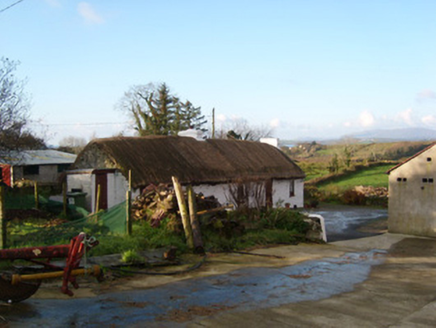Survey Data
Reg No
40909830
Rating
Regional
Categories of Special Interest
Architectural, Technical
Original Use
House
In Use As
House
Date
1780 - 1820
Coordinates
182777, 375682
Date Recorded
21/11/2007
Date Updated
--/--/--
Description
Detached three-bay single-storey vernacular house, built c. 1800 and extended c. 1860, having outbuilding attached to the east gable end. Single-bay flat-roofed addition attached to the east gable end of outbuilding. Pitched/domed thatched roof having ropes and wire mesh over secured on metal pegs below eaves level, and with two rendered chimneystacks (one to the west gable end and one to the east side of centre.. Limewashed rubble stone construction. Square-headed window openings with painted sills and one-over-one pane timber sliding sash windows; some two-over-two pane timber sliding sash windows to the rear elevation (south). Square-headed door opening, offset to the west side of centre, having timber battened door. Flagstone floor to interior. Set back from road, aligned at a right-angle to the road-alignment, and located to the south-west of Mountcharles. Yard to front (north) and garden to rear (south). Pair of attached single-storey outbuildings to the north having pitched corrugated-metal roofs, cement rendered rubble stone walls, and square-headed door openings with timber doors.
Appraisal
This notable and well-maintained vernacular house retains its early character and form, and is an instantly appealing feature in the scenic landscape to the north-east of Dorrin Point. Its visual appeal is enhanced by the retention of the timber sliding sash windows, while the unrefined whitewashed rubble stone construction creates a charming composition of some picturesque appeal. Modest in scale, it exhibits the simple and functional form of vernacular building in Ireland. Of particular interest in the survival of the thatched roof, which is now sadly becoming increasingly rare in Donegal. The rounded roof is a typical feature of thatched houses located close to the sea in exposed areas in the north-west of Ireland, while the metal pegs to the eaves were used to tie ropes (and sometimes nets or wire mesh) over the roof to secure it against the prevailing winds as is the case here at Drumgorman. This particular vernacular building is notable for the attached outbuilding to the east end, which is contained under the same roof as the dwelling to the west. This suggests that this house maybe of considerable antiquity as a development of the ‘long-house’ or ‘byre-dwelling’ that was common during the eighteenth century. The location of the chimneystacks and the position of the doorway suggest that this building is of the ‘direct entry’ type that is characteristic of the vernacular tradition in north-west Ireland. This house is one of the better surviving examples of its type in Donegal, and is an important element of the built heritage of the county. The simple outbuildings to the north add to the setting and completes the context.
